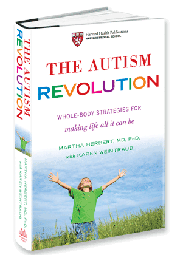What is autism?
Here are some of the main conceptions (or models) of autism. Notice that they refer to different levels of our living beings:
- Behavioral syndrome
- Autism is formally defined as involving impairments in the domains of communication, social interaction and behavior (involving repetitive and restricted behaviors)
- Neurological disorder
- Dysfunction of the brain
- Dysfunction of the whole nervous system
- Cultural variant
- Some people see autism as a different way of perceiving, processing information and expression that is inherently valuable in its own right and not a disorder or a deficit.
- Cognitive difference – different way of thinking: autism arises because people with autism have differently organized thinking processes
- Autism involves seeing pieces but not the whole (“weak central coherence”)
- Autism involves deficits in social and emotional processing
- Sensory-perceptual difference – different way of perceiving
- Autism involves differences in sensory processing which underlie more complex functions such as social and emotional processing
- Whole body dysfunction
- Version 1: specific body problems (e.g. in gut or immune system) cause brain dysfunction that causes autistic behavior
- Version 2: global dysfunction (e.g. physiology — biochemistry, energy production immune system, metabolism) cause problems in many parts of the body including the brain
- Regulatory Disorder
- Regulation of emotions. thinking, attention, physiological function (immune, hormonal, metabolic, digestive), nervous system function, etc. is destabilized and/or fragile, leading to vulnerability across many levels of the system
- An “emergent property” (or set of them) rather than a “thing”
- Version 1: Autism behaviors are what the brain produces when it has altered neurological properties
- Version 2: Autism behaviors are what the brain produces when it is part of a whole system whose properties have shifted
- Obstruction
- Based upon transient improvements (e.g. during fever) and great improvements or recoveries/remissions, “autism” can be considered an “obstruction” of capabilities that are intrinsically present but not able to be expressed during the “autistic state”
- Canary in a coal mine
- The vulnerability of people with autism is an indicator of challenges that will affect ever more people as our world becomes more toxic and stressful.
- Transformational opportunity
- We need to rise to a higher level to meet the challenges of autism.
How do all of these levels relate to each other? People focus on properties of autism that are at different levels. We are taught to think that one level is primary. For autism, behaviors are how autism is defined, and they are often considered primary.
But every moment of our lives we are simultaneously behaving, cultural, thinking, sensing, perceiving, neurally processing, whole-body beings. Autism has facets at all of these levels. Explanations at different levels are not necessarily mutually exclusive.
But then, how do these different levels relate to and influence each other? For example, how does behavior affect biology? Or biology affect behavior?
In a complex, multisystem condition, these questions about how different levels affect each other are important. But they are hard to study except in a fragmentary way when research models focus on drilling down on small segments of systems.


